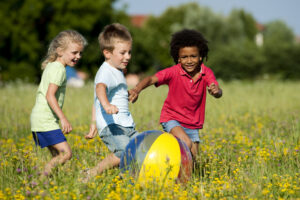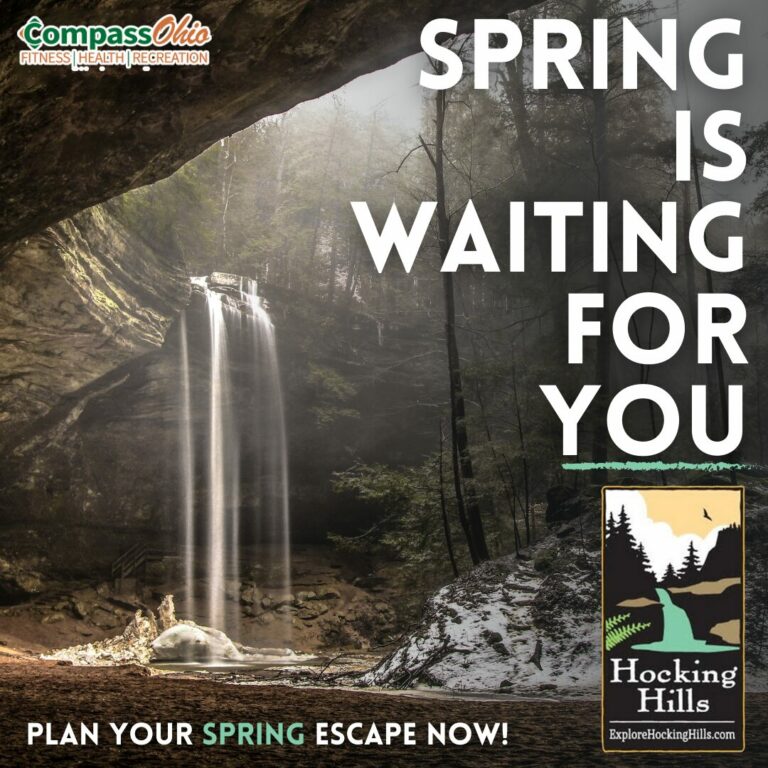
Preschoolers have a lot of energy, which they use in a more organized way than when they were toddlers. Instead of just running around in the backyard, a preschooler has the physical skills and coordination to ride a tricycle or chase a butterfly. Preschoolers also are discovering what it means to play with a friend instead of just alongside another child, as toddlers do. By being around other kids, a preschooler gains important social skills, such as sharing and taking turns. Despite occasional conflicts, preschoolers learn to cooperate and interact during play.
Helping Kids Learn New Skills
Preschoolers develop important motor skills as they grow. New skills your preschooler might show off include hopping, jumping forward, catching a ball, doing a somersault, skipping, and balancing on one foot. Help your child practice these skills by playing and exercising together.
When you go for a walk, your preschooler may complain about being tired but most likely is just bored. A brisk walk can be dull for young kids, so try these tips to liven up your family stroll:
- Make your walk a scavenger hunt by giving your child something to find, like a red door, a cat, a flag, and something square.
- Sing songs or recite nursery rhymes while you walk.
- Mix walking with jumping, racing, hopping, and walking backward.
- Make your walk together a mathematical experience as you emphasize numbers and counting: How many windows are on the garage door? What numbers are on the houses?
These kinds of activities are fun and also help to prepare kids for school.

How Much Activity Is Enough?
Physical activity guidelines for preschoolers recommend that each day: they get at least 60 minutes of structured (adult-led) physical activity; they get at least 60 minutes of unstructured (free play) physical activity; and they not be inactive for more than 1 hour at a time unless sleeping. Limit screen time — time spent watching TV (including videos and DVDs), on the computer, and playing video games — to no more than 1-2 hours per day.
Structured Play
Preschoolers are likely to get structured play at childcare or in preschool programs through games like “Duck, Duck, Goose” and “London Bridge.” Consider enrolling your child in a preschool tumbling or dance class. Your preschooler can get structured outdoor play at home, too. Play together in the backyard or practice motor skills, such as throwing and catching a ball. Preschoolers also love trips to the playground.
Though many kids love being outdoors, lots of fun things can be organized indoors: a child-friendly obstacle course, a treasure hunt, or forts made out sheets and boxes or chairs. Designate a play area and clear the space of any breakables.
Here are some more ideas for structured play: play bounce catch; use paper airplanes to practice throwing; balance a beanbag on your heads while walking — make this more challenging by setting up a simple slalom course; play freeze dance; play wheelbarrow by holding your child’s legs while he or she walks forward on hands.
Many parents are eager to enroll their preschool child in organized sports. Although some leagues may be open to kids as young as 4 years old, organized and team sports are not recommended until kids are a little older. Preschoolers can’t understand complex rules and often lack the attention span, skills, and coordination needed to play sports.
If you decide to enroll your preschooler in an organized team sport, such as T-ball or soccer, make sure the focus is on helping kids gain basic physical skills, like running, and fundamental social skills, like following rules and taking turns.
If your preschooler is not ready for the team or not interested in sports, consider helping him or her continue to work on fundamental skills — hopping on one foot, catching a ball, doing a somersault, and maybe riding a bicycle or tricycle.
To teach preschoolers to play baseball, start by teaching them basic skills, such as throwing, catching, and hitting off a T-ball stand. Then, if you play a game of wiffle ball, don’t worry if your child doesn’t tag first base — it’s enough to get kids running in the right direction.

Unstructured or Free Play:
Unstructured or free play is when kids are left more to their own devices — within a safe environment. During these times, they should be able to choose from a variety of physical activities, such as exploring, playing outside, or dancing around the kitchen.
During pretend play, preschoolers often like to take on a gender-specific role because they are beginning to identify with members of the same gender. A girl might pretend to be her mother by “working” in the garden, while a boy might mimic his dad by pretending to cut the lawn. It’s clear your preschooler is keeping an eye on how you spend your time, so set a good example by exercising regularly. Kids who pick up on this as something parents do will naturally want to do it, too.
Safety Concerns
No matter what type of physical activity your child gets, it’s important to keep safety concerns in mind. Remember that preschoolers are still developing coordination, balance, and judgment. So as preschoolers play, a parent’s challenge is to find a balance between letting them try new things and keeping them safe and preventing injuries.
- A child on a tricycle or bike should always wear a helmet.
- If you haven’t done so already, it’s time to talk about street safety because even the most cautious preschooler may dart into the street after a ball.
- A preschooler in a swimming pool needs constant adult supervision, even if he or she has learned to swim.
It’s a tricky age because kids want more independence, and should have some, but cannot be left unsupervised. Preschoolers still need their parents to set limits. Giving kids safe opportunities to play in both organized and unstructured ways builds a foundation for a fit lifestyle that can carry them through life.
Article courtesy of Akron Children’s Hospital
Raising a Fit Preschooler






